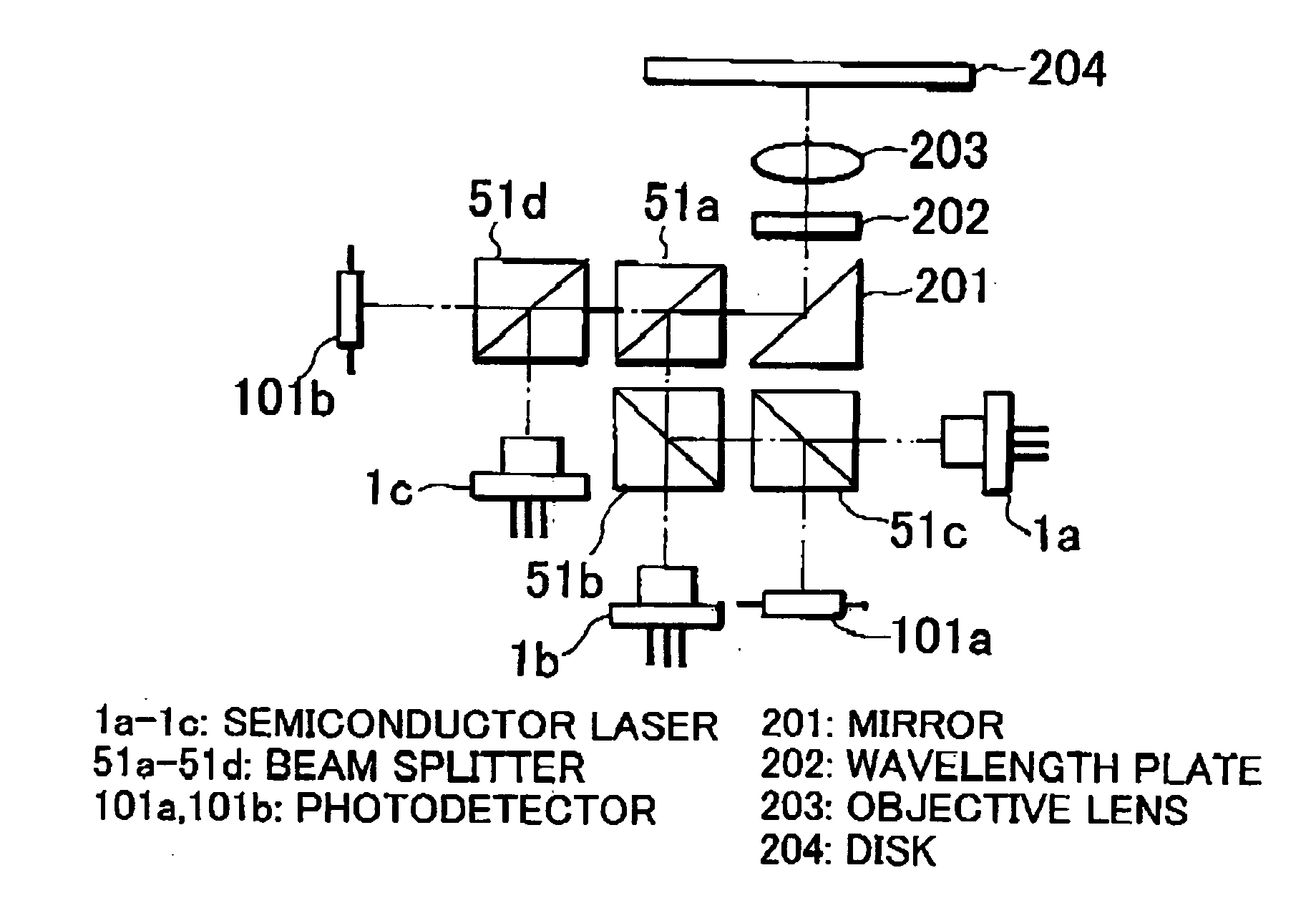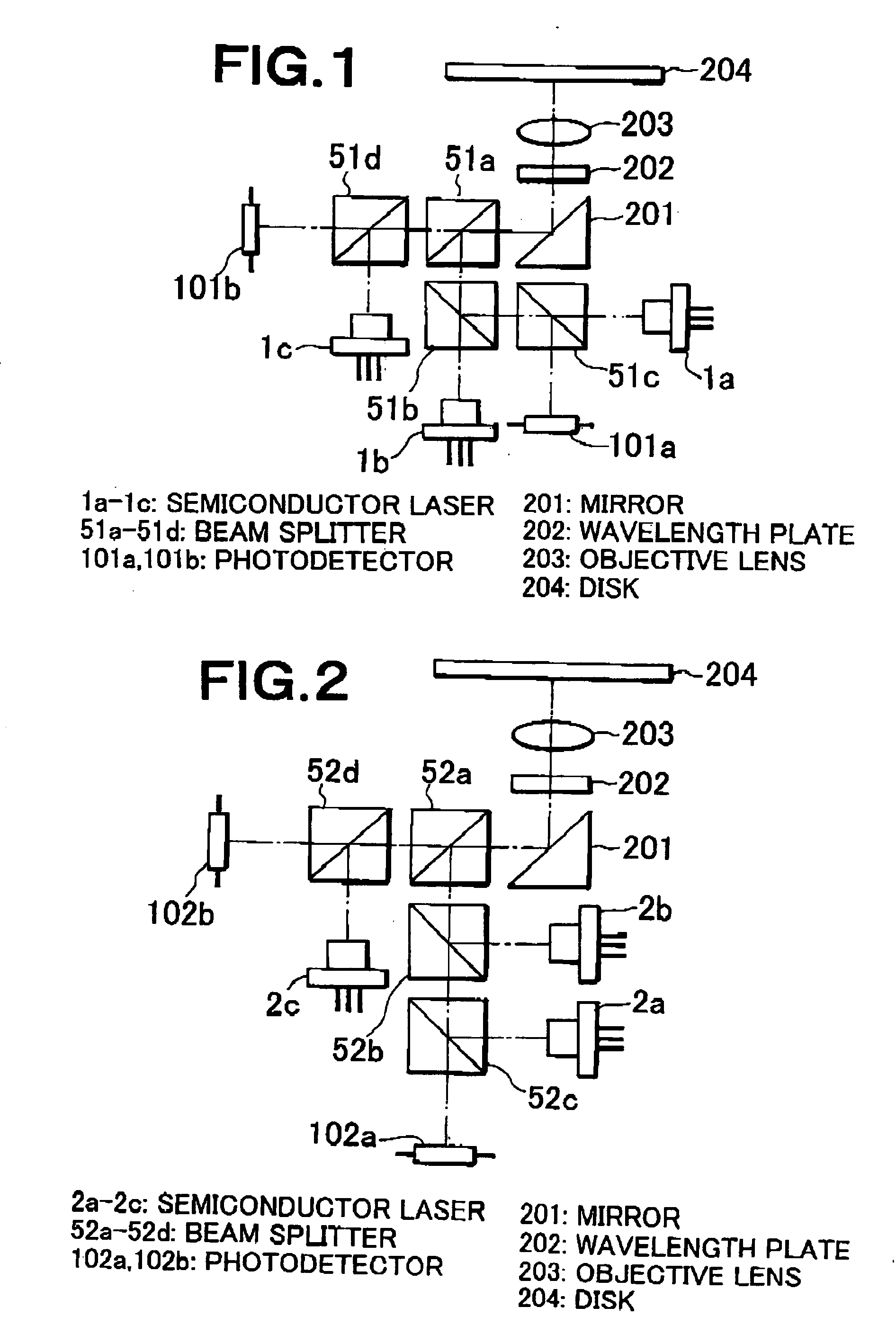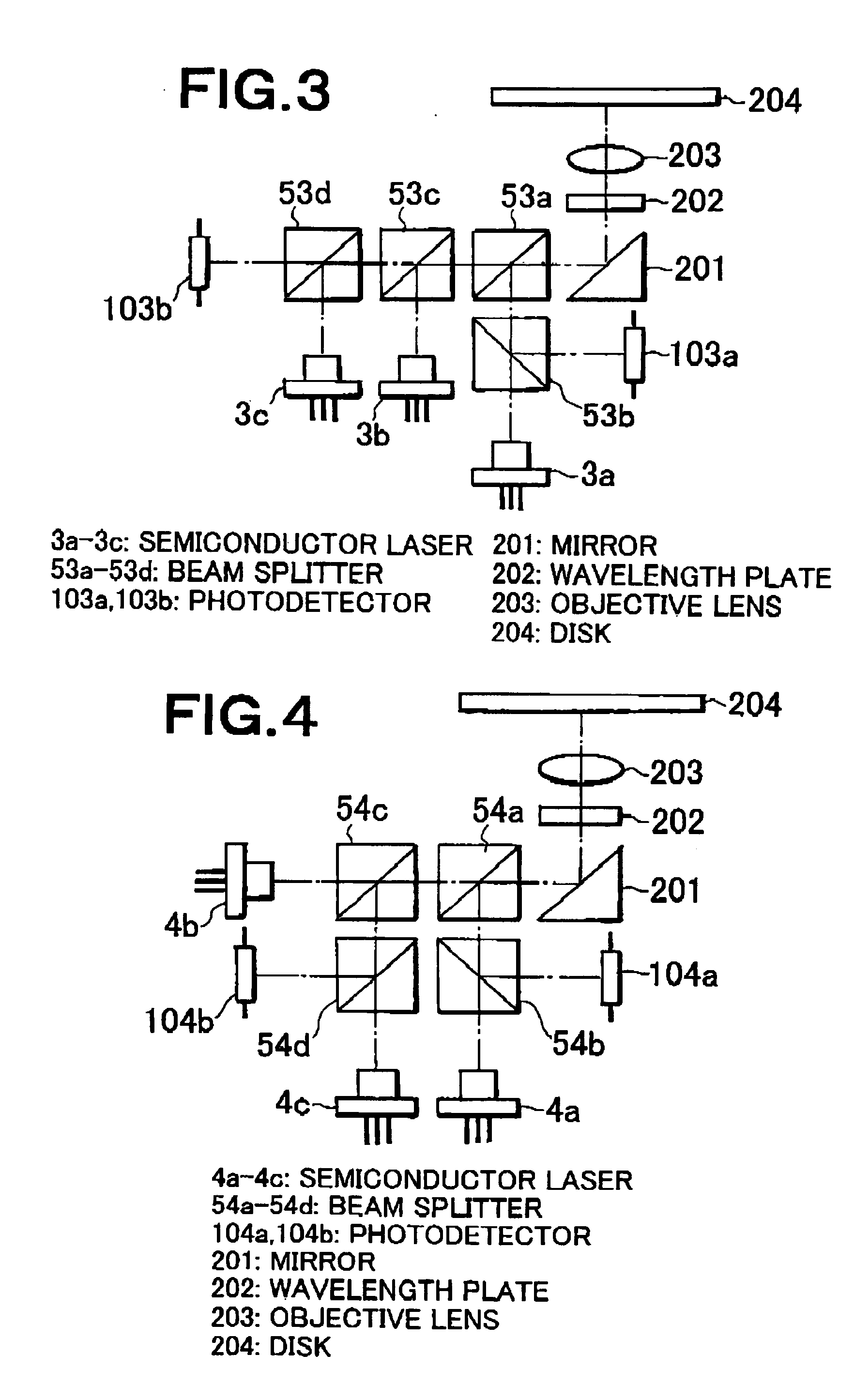Optical head apparatus and optical information recording or reproducing apparatus
- Summary
- Abstract
- Description
- Claims
- Application Information
AI Technical Summary
Benefits of technology
Problems solved by technology
Method used
Image
Examples
fourth embodiments (
3. First to Fourth Embodiments (Type 1)
[0155] Each of the first to fourth embodiments of the present invention has a form which has three light sources and two photodetectors.
(First Embodiment)
[0156]FIG. 1 shows the first embodiment of the optical head apparatus according to the present invention. Wavelengths of the semiconductor lasers 1a, 1b, and 1c are 780 nm, 660 nm, and 400 nm, respectively. The beam splitter D is used as a beam splitter 51a. Any of the beam splitters K, O, and X is used as a beam splitter 51b. Any of the beam splitters L, Q, W, S, V, and Y is used as the beam splitter 51c. Any of the beam splitters G, J, M, N, T, U, W, X, and Y is used as the beam splitter 51d.
[0157] Light having a wavelength of 400 nm and emitted from the semiconductor laser 1c enters, as S-polarized, into the beam splitter 51d. Almost all of the light is reflected therefrom and passes through the beam splitter 51a. This light is then reflected by a mirror 201 and transformed into circula...
ninth embodiments (
4. Fifth to Ninth Embodiments (Type 2)
[0209] The fifth to ninth embodiments of the present invention each have three light sources and one photodetector.
(Fifth Embodiment)
[0210]FIG. 5 shows the fifth embodiment of the optical head apparatus according to the present invention. The wavelengths of the semiconductor lasers 5a, 5b, and 5c are 400 nm, 660 nm, and 780 nm, respectively. The beam splitter G is used as a beam splitter 55a. Any of the beam splitters H and U is used as a beam splitter 55b. Any of the beam splitters I, S, T, and Y is used as the beam splitter 55c.
[0211] Light having a wavelength of 400 nm and emitted from the semiconductor laser 5a enters, as S-polarized, into the beam splitter 55a. Almost all of the light is reflected therefrom and further reflected by the mirror 201. This light is transformed into circularly polarized light from linearly polarized light by a wavelength plate 202, and is converged on a disk 204 according to the next-generation standard by a...
tenth embodiment (
5. Tenth Embodiment (Type 3)
[0283] The tenth embodiment of the optical head apparatus according to the present invention has two light sources and two photodetectors. However, one of the two light sources is constructed by integrating two light sources.
[0284]FIG. 10 shows the tenth embodiment of the optical head apparatus according to the present invention. The semiconductor laser 10b is a semiconductor laser which integrates two semiconductor lasers. The structure of the laser will be described later with reference to FIG. 72. The wavelength of the semiconductor laser 10a is 400 nm, and the semiconductor laser 10b has wavelengths of 660 nm and 780 nm. The beam splitter A is used as a beam splitter 60a. Any of the beam splitters G, J, M, N, T, U, W, X, and Y is used as a beam splitter 60b. Any of the beam splitters S, V, and Y is used as a beam splitter 60c.
[0285] Light having a wavelength of 400 nm and emitted from the semiconductor laser 10a enters, as P-polarized, into the beam...
PUM
 Login to View More
Login to View More Abstract
Description
Claims
Application Information
 Login to View More
Login to View More - R&D
- Intellectual Property
- Life Sciences
- Materials
- Tech Scout
- Unparalleled Data Quality
- Higher Quality Content
- 60% Fewer Hallucinations
Browse by: Latest US Patents, China's latest patents, Technical Efficacy Thesaurus, Application Domain, Technology Topic, Popular Technical Reports.
© 2025 PatSnap. All rights reserved.Legal|Privacy policy|Modern Slavery Act Transparency Statement|Sitemap|About US| Contact US: help@patsnap.com



